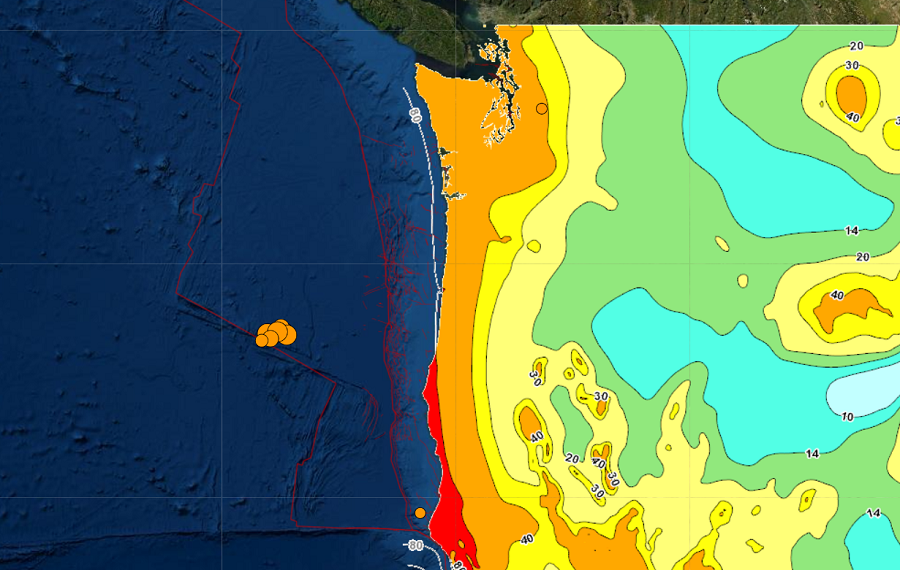
More than 60 earthquakes have rocked the Pacific Northwest, with 11 at a magnitude of 2.5 or greater , and 3 at 5.2 or greater magnitude. While shaking has been felt in portions of the Northwest, there is no tsunami threat from this ongoing swarm.
The three strongest earthquakes struck early this morning at a depth of about 6 miles. The strongest quakes struck about 195 miles west of Eugene, Oregon and 235 miles southwest of Portland, Oregon. A 5.4 hit at 3:30am, a 5.2 hit at 3:35am, and a 5.3 hit at 3:58am.
The National Weather Service Tsunami Warning Center in Palmer, Alaska is monitoring the swarm. A 4.6 which struck at 2:37 pm yesterday prompted the issuance of a Tsunami Information Statement, but no advisory or warning. While stronger earthquakes struck the region since then, there’s been no new tsunami statement issued.
Tsunamis are giant waves caused by earthquakes or volcanic eruptions under the sea. Out in the depths of the ocean, tsunami waves do not dramatically increase in height. But as the waves travel inland, they build up to higher and higher heights as the depth of the ocean decreases. According to the National Ocean Service, the speed of tsunami waves depends on ocean depth rather than the distance from the source of the wave. Tsunami waves may travel as fast as jet planes over deep waters, only slowing down when reaching shallow waters. While tsunamis are often referred to as tidal waves, this name is discouraged by oceanographers because tides have little to do with these giant waves.
Today’s earthquakes struck near the Cascadia Fault zone, which marks the edge of Oregon’s active subduction zone. According to the Oregon Department of Geology and Mineral Industries, it is very active, producing magnitude 8-9 earthquakes on average every 450 to 500 years, with the last event in 1700.